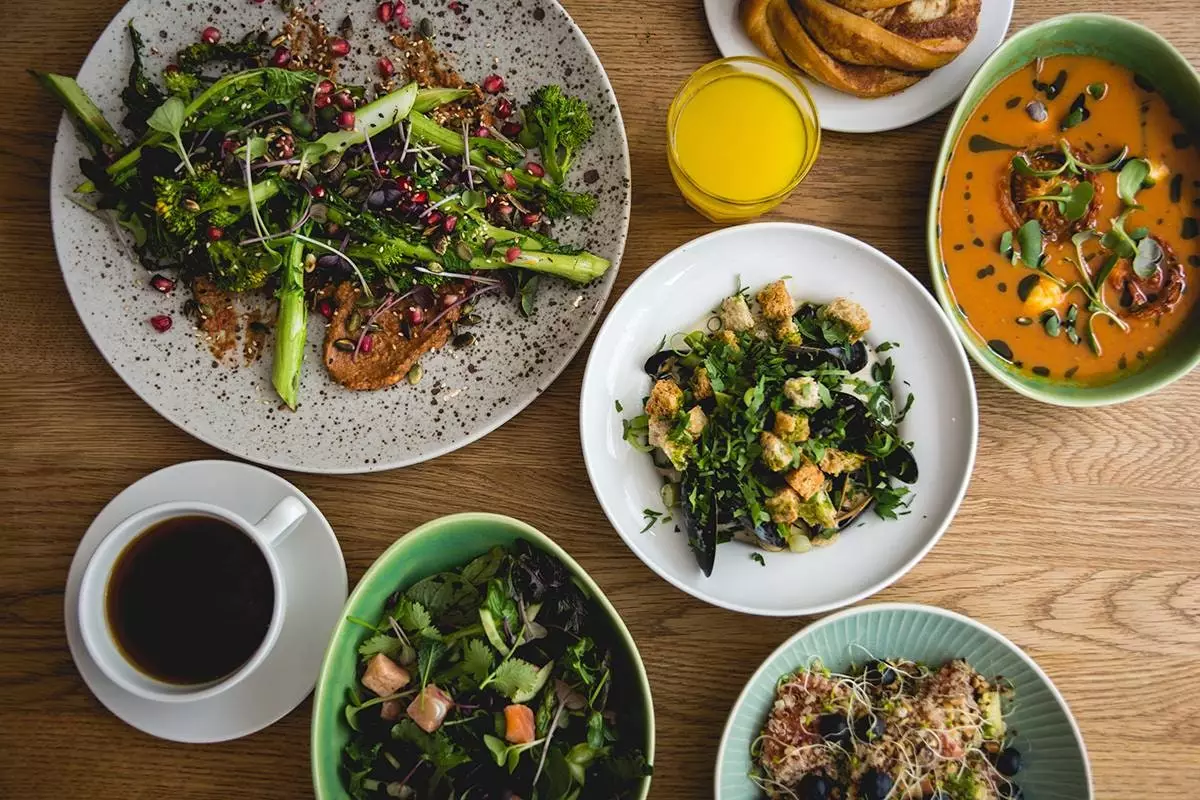
Honest, organic and local, this is the cuisine of Ostehuset Øst.
We have prepared a nordic menu loaded with local products, catches of the day, adventures in the fjords, tours of scenic roads and routes through World Heritage sites so that the taste of Norway that you take with you is as complete and delicious as possible.
FIRST COURSE: BERGEN
Known for her picturesque Fisketorget open-air fish and seafood market Dating back to the year 1200 –in which today you choose the catch of the day and they cook it for you at the moment–, the second largest city in Norway does not shy away when bad weather arrives (they call it the Seattle of Europe because it is the place where it rains the most in the country).
For this reason, in 2012, it opened its doors – on the same esplanade in front of the port where the street stalls are located from May to September – the secluded and contemporary Fish Marked Mathallen, with its walls, its roof, its permanent shops and restaurants open throughout the year.
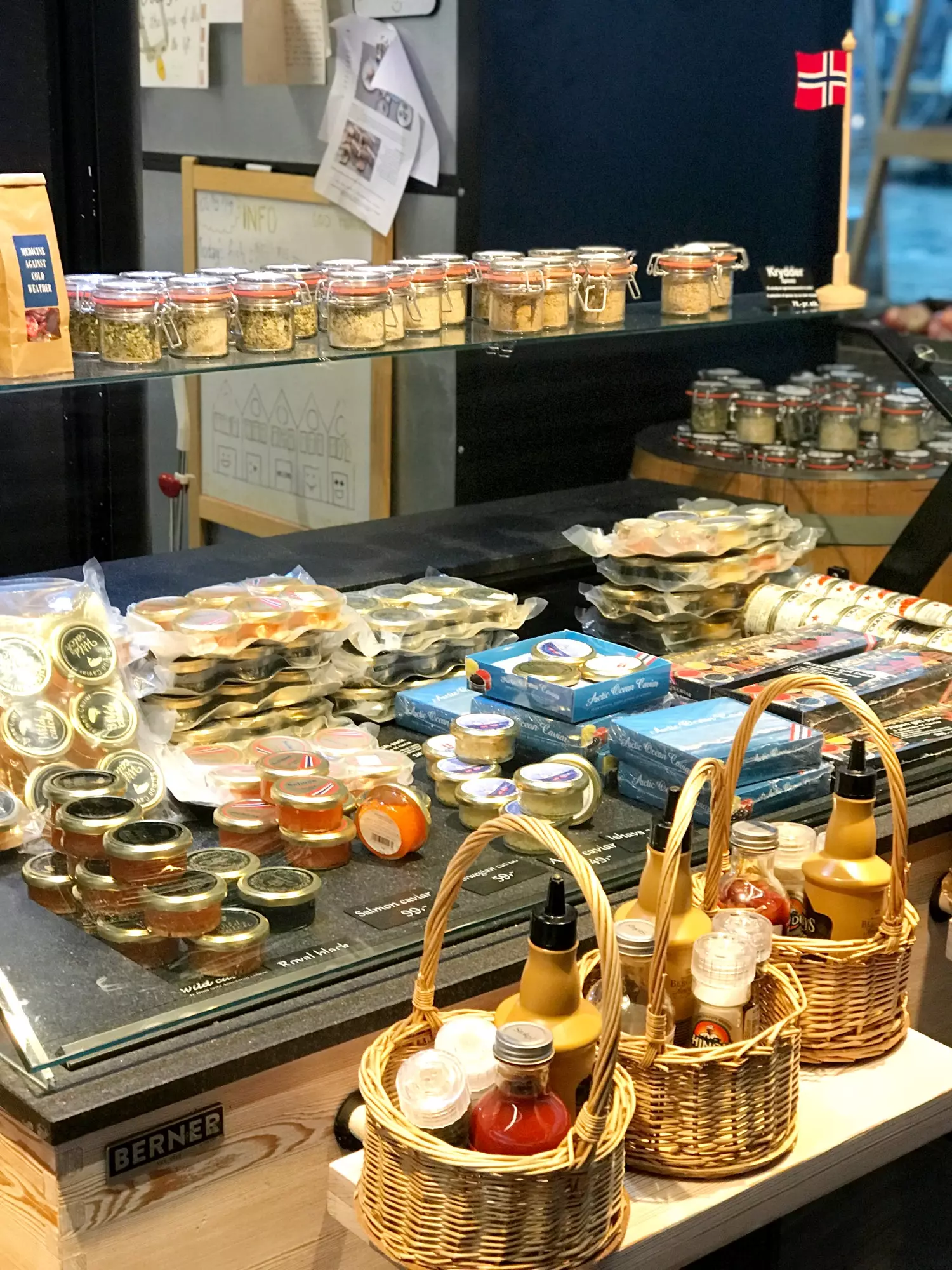
One of the stalls at the permanent Fish Marked Mathallen market in Bergen.
Lobster, lobster, king crab, wild and marinated salmon, fish roe of different colors... flood their counters with an unusual freshness and color; they make it weird too varieties of sausages, such as elk, reindeer or even whale. [Remember that Bergen was designated by UNESCO in 2015 as City of Gastronomy, since its strategic location –between mountains, fjords, islands and the great North Sea– makes it perfectly nourished each season by all kinds of local products].
To the other the windows (and the port) other are the colors that attract our attention: those of the wooden houses of its hanseatic wharf Bryggen (Bergen was one of the main seats of the Hanseatic League).
Located on the eastern shore of the fjord where the city sits, in this labyrinthine, historic and UNESCO-protected multi-colored neighborhood (you don't get an idea of the depth of the buildings until you get 'lost' in its narrow alleys) it was where merchants exchanged fish and merchandise from the year 1350 until the end of the 18th century.
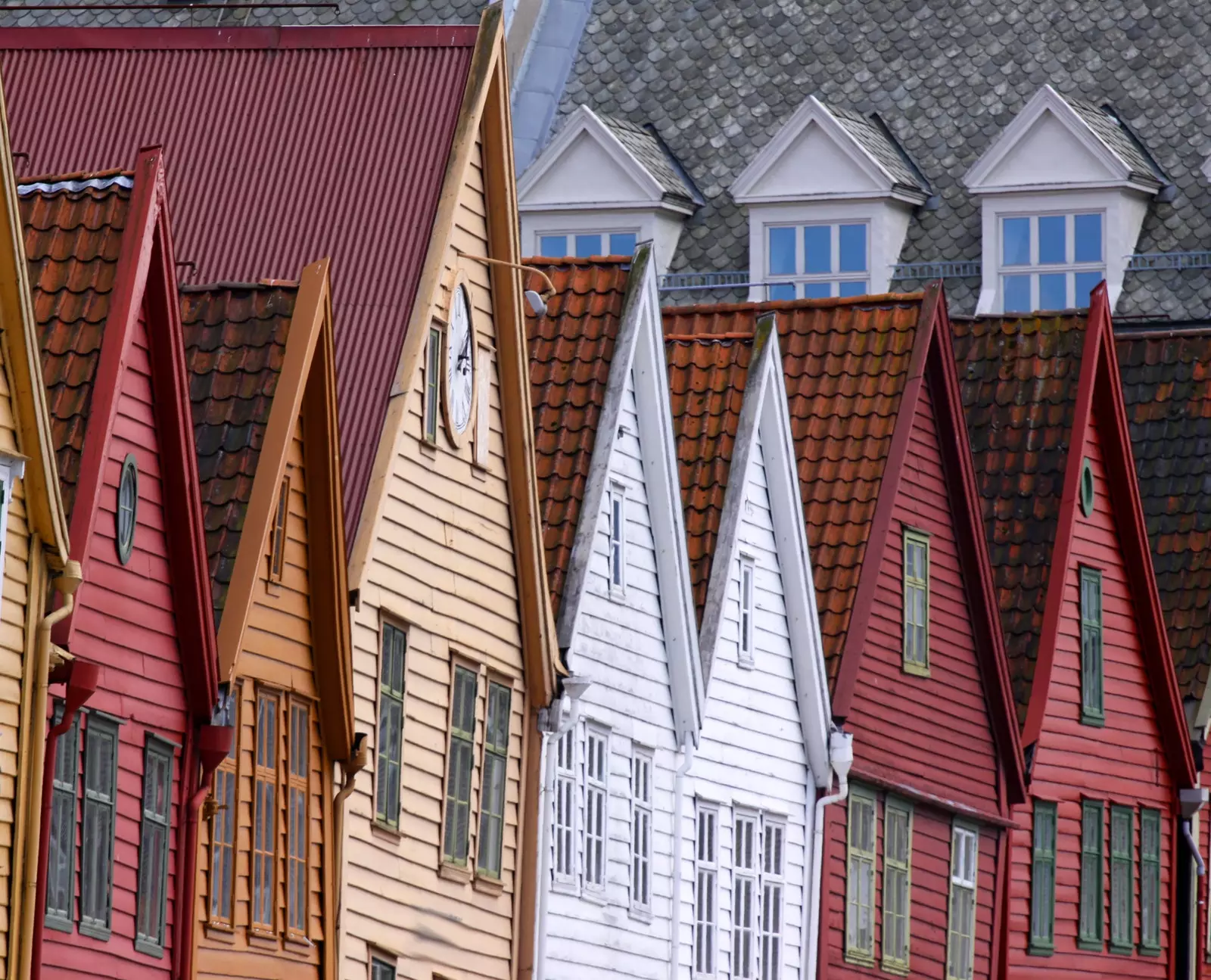
The Bryggen Pier in Bergen is a UNESCO World Heritage Site.
Today most of the buildings are taken over by offices, artisans and the occasional somewhat touristy restaurant. For this reason, we recommend that you get away from it a bit (don't worry, the historic center of Bergen is very small) to taste more authentic cuisine and less theatrical.
A recommended option is Bare Vestland, a comfortable place with up-to-date Norwegian cuisine. Decorated with noble woods, as if it were an old brewery, from its open kitchen you will see salads based on fresh and pickled vegetables or more forceful dishes such as the fish of the day or the meat stewed with beer.
SECOND COURSE: BEKKJARVIK GJESTGIVERI
Almost at the same time, in the 17th century, the Bekkjarvik fishing settlement –whose seafaring activity has always been linked to the exchange of products and merchandise– and the inn that was at that time Bekkjarvik Gjestgiveri.
Today this hotel that looks like a town or this town that looks like a hotel is known internationally for its restaurant, considered one of the best in the country, since it is led by Ørjan Johannessen, chef who won the Bocuse d`Or award 2015 and 2014 and who is accompanied in the kitchen by his twin brother, Arnt, who received the award for Chef of the Year in Norway.
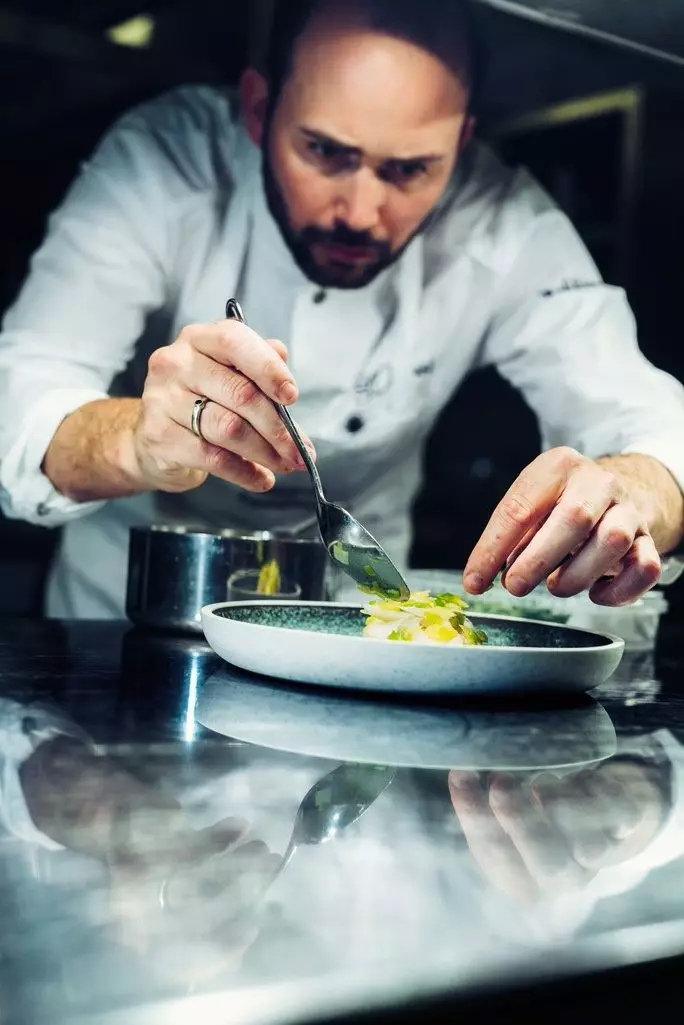
Chef Ørjan Johannessen, who heads the restaurant at Bekkjarvik Gjestgiveri.
This idyllic enclave is the perfect starting point to get to know the imposing open-air amphitheater Moster Amfi, where you can learn a little more about Viking history, the historical and cultural evolution of Norway – from paganism to Christianity – and the importance of the rocks, minerals and metals extracted in the Bømlo archipelago, where it is located.
In addition, just in front remains almost intact (and surrounded by hundreds of tombstones) which is considered the oldest church in all of Norway, since according to the Icelandic sagas (mostly anonymous documents that collect the events that took place in the Viking countries during the 10th and 11th centuries), it was in the town of Moster where Olav Trygvason docked in 995 –After his voyage across the North Sea from England– to become King of Norway. Here he officiated mass, founded a church and began to spread the practice of Christianity in the country.
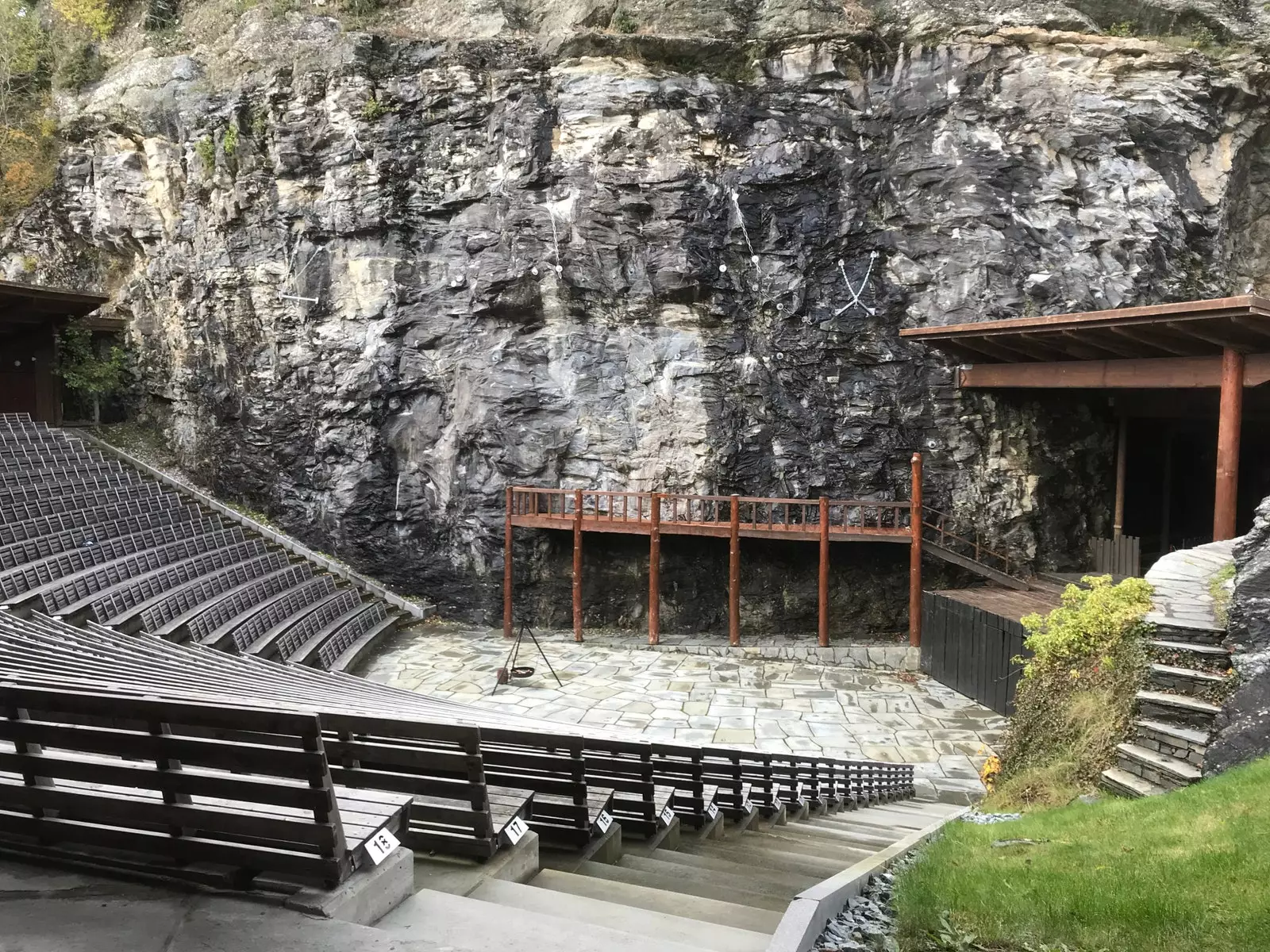
The Moster Amfi amphitheater is based on the rocky orography of the landscape.
You should not leave the area without enjoying an adventure activity such as sailing the Selbjørnsfjord straddling the seats of a modern Zodiac.
The company Brandasund Culture & Leisure is responsible for administering the right dose of adrenaline that involves jumping over waves of more than three meters (in the part closest to the open sea) while take you up to Slåtterøy lighthouse (in whose former house of the lighthouse keeper can sleep up to 14 people). On the way you will take as a gift, in addition to frights and surprises, improvised stops in which ask the local fishermen what the hard job of catching lobsters is like.
If you are lucky enough to meet Jostein Waage, owner of the business, ask him to show you his 'offices': an old 19th century grocery store that belonged to his grandmother and that he has decided to leave intact for the enjoyment and enjoyment of the senses. There are old posters peeling off the walls, battered fishing gear hanging from the ceiling or resting on the floor, and all kinds of miscellany more typical of an antiquarian that of a multiadventure business.
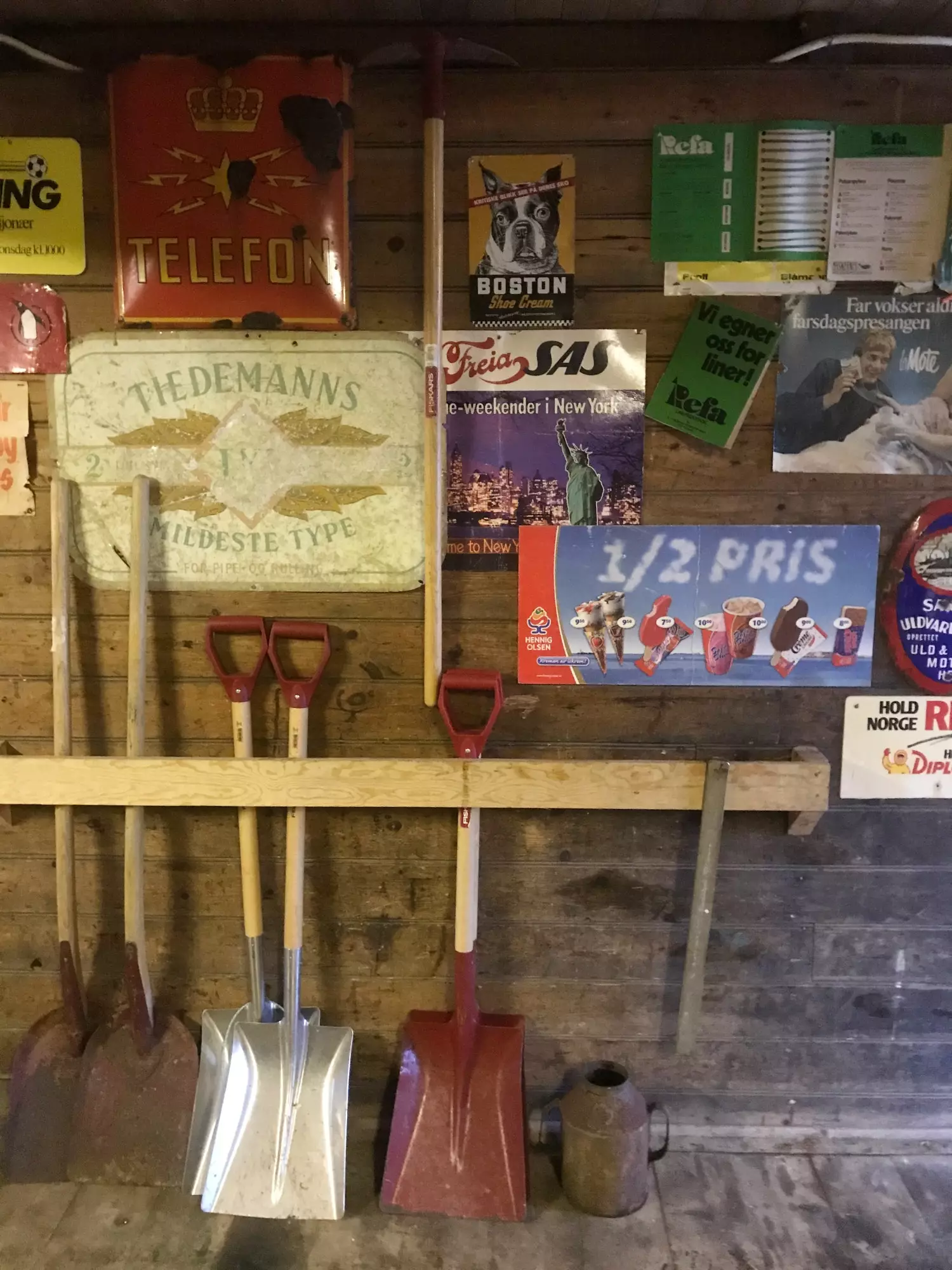
These are the offices of the multi-adventure company Brandasund Culture & Leisure.
DESSERT: JØRPELAND
We usually associate Norway with cruise trips sailing through the fjords, but there is a network of scenic roads that wind between mountains and bring us closer, if possible, to the wild nature of the country, adding contemporary architectural installations to the equation that are integrated into the landscape without altering it.
This is the case of the Norwegian Scenic Route Ryfylke, which crosses this region, leaving behind waterfalls, cliffs and fjords, from Oanes by the Lysefjord to Hårå in Røldal. In addition, the route includes an exhibition gallery showing the history of the Sauda mines devised by the Swiss architect Peter Zumthor in the Allmannajuvet Gorge and Norwegian modernist Geir Grung's striking power station in Nesflaten.
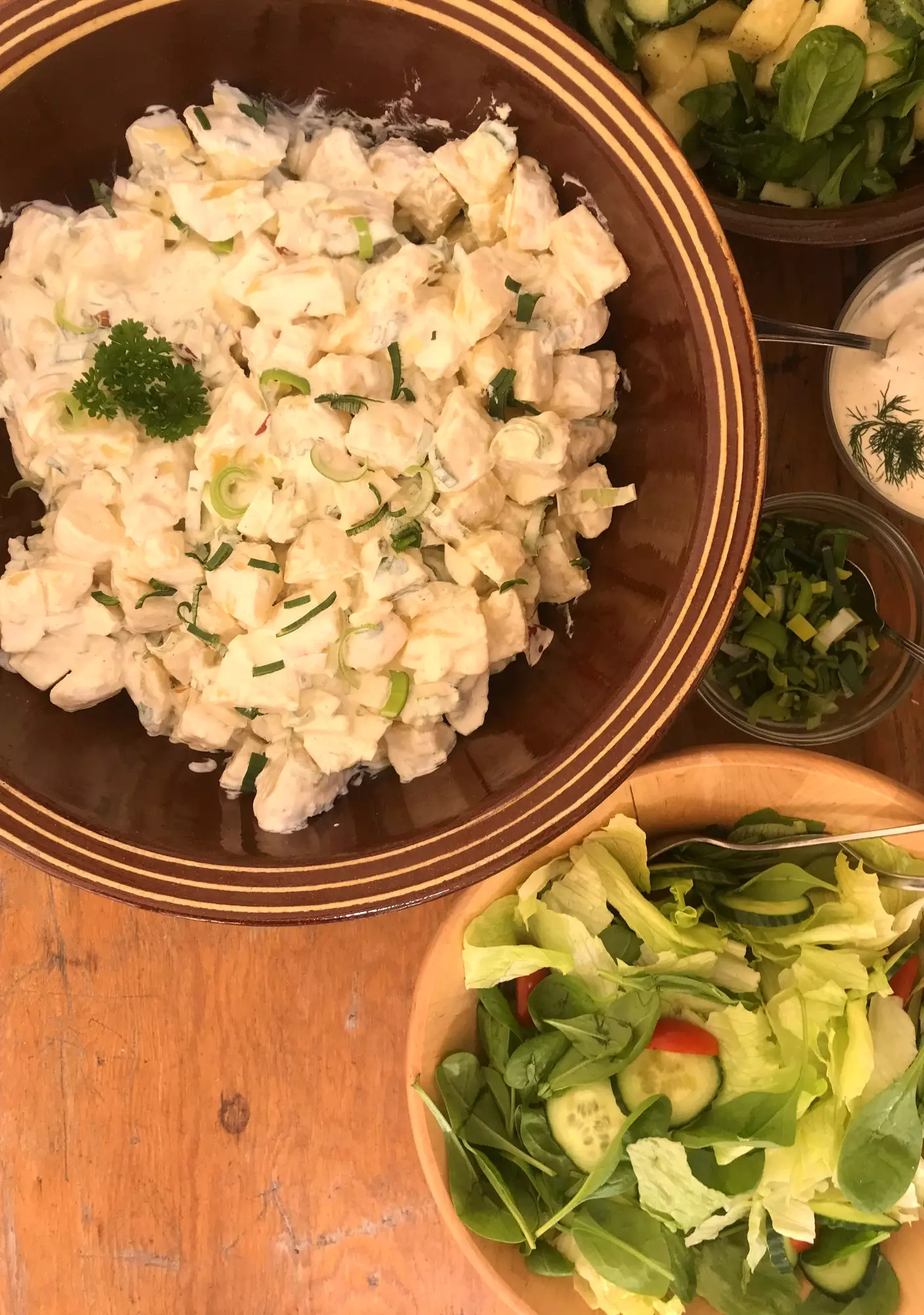
Typical Norwegian potato salad served in a lavvu.
We can order at Mo Laksegard - a tourist complex built around an old farm in Sandsbygda, next to the salmon river Suldalslågen– that they prepare a traditional lunch of grilled salmon and Norwegian potato salad in the middle of the forest inside a lavvu, the traditional Sami tent.
In the afternoon, have a craft beer tasting at Lilland Brewery Hotel and go for dinner at ** Rosehagen Kafé, the former residence of the director of the steel town, Jørpeland,** restored as a restaurant by the expressive Sonja, who will serve us a dinner prepared with local ingredients such as reindeer or arctic berries.
With views of the sea and the port of which it is considered one of the richest towns in all of Norway (you just have to see how impressive their houses are) , in the idyllic garden of Rosehagen there are more than a hundred different roses.
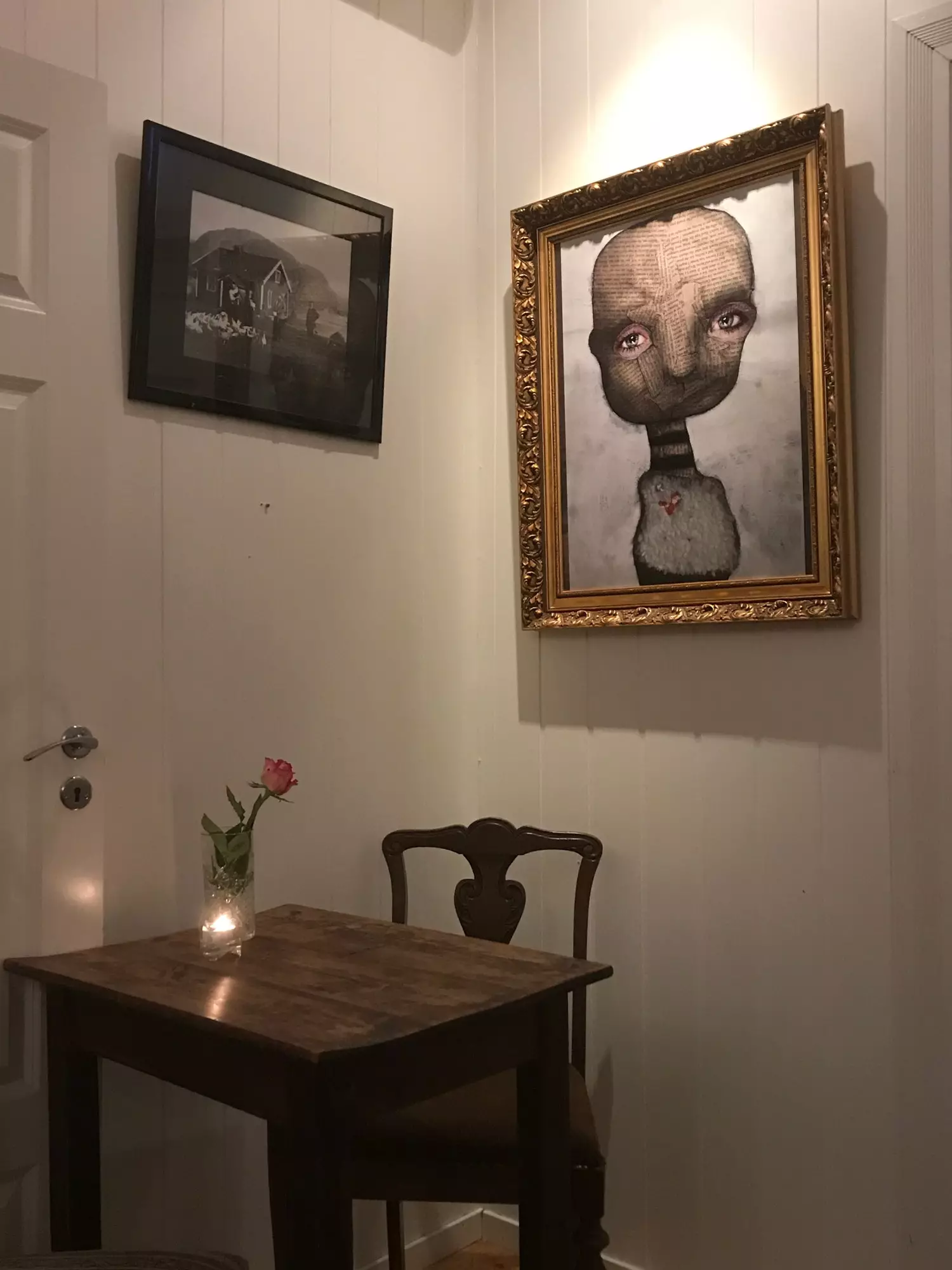
One of the cute tables at Rosehagen Kafé.
THE DIGESTIVE: STAVANGER
The region of Stavanger in key for the Norwegian economy, since it has been linked to the oil sector since the first oil well was discovered in Ekofisk, in the south of the North Sea, in 1969. And the old city of Stavanger boasts of having the best preserved settlement of wooden houses in Europe, a neighborhood of white houses that contrasts with the colorful street of Fargegaten, full of cafes and restaurants with outdoor terraces that give it a very lively life.
Although for animation, the one that is achieved again in a zodiac with seats sailing at full speed through the Lysefjord. The tour offered by Fjord Events includes a stop at the whiskey waterfall (they will bring you so close to the waterfall that you can see with your own mouth the reason for its name) and another under the Preikestolen, the square rock formation that rises 604 meters above the fjord known as the pulpit, because they say that from there you can talk to the gods.
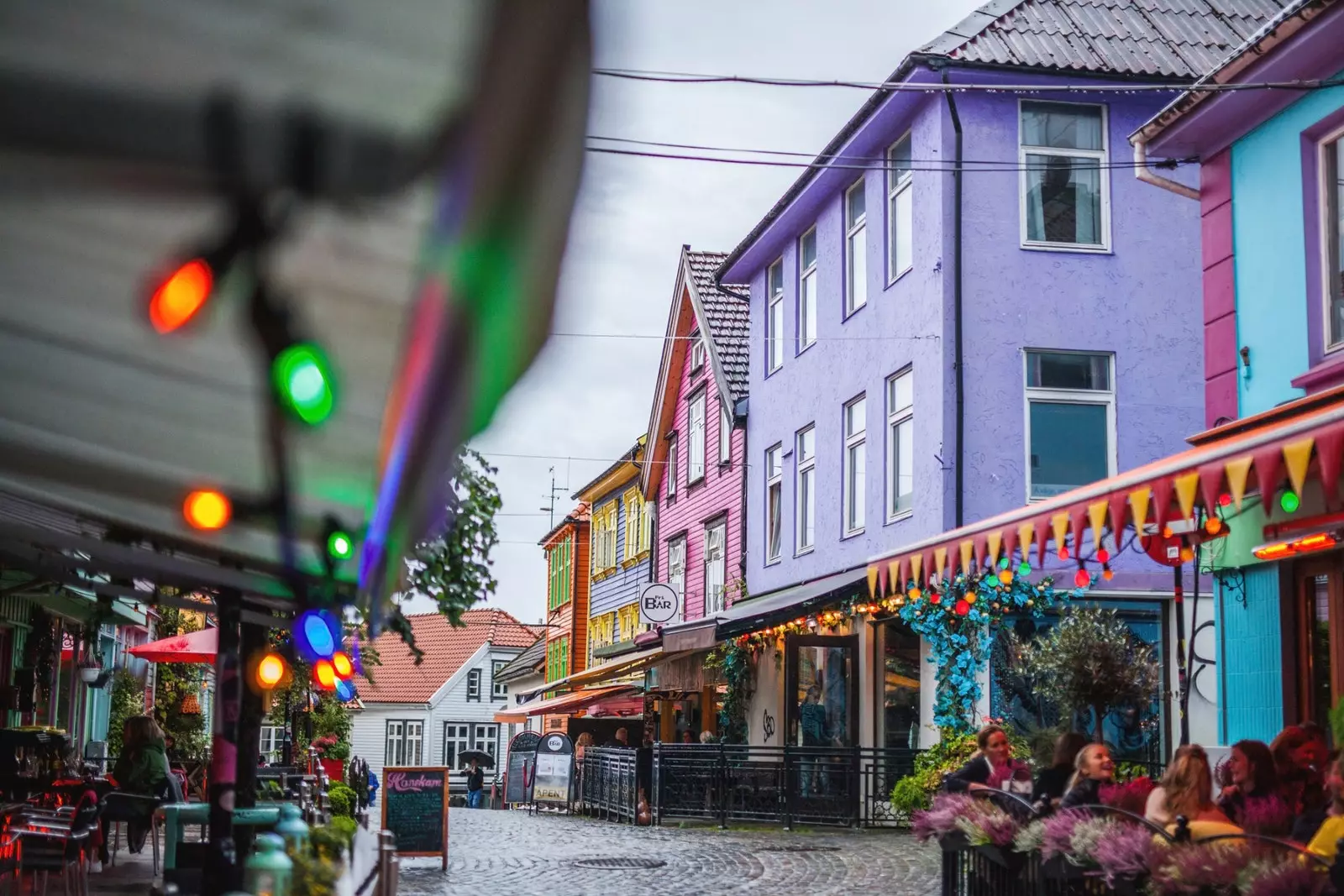
The colorful and lively street of Fargegaten, in Stavanger.
To recharge your batteries after the adventure, it is worth going to Ostehuset Øst, a restaurant with up-to-date Nordic cuisine (honest, local and in some cases organic) specialized in cheeses, and leave the main course for dinner: a visit to ** Renaa Matbaren, the comfortable brasserie of Michelin star chef Sven Erik Renaa** where you can try everything from a relaxed Black Angus hamburger to a Norwegian entrecôte.
Jeg håper det smaker! (Take advantage!) .
JOURNEY NOTEBOOK
How to get: Norwegian is the main airline that connects Spain with Norway and offers direct flights to Bergen from Barcelona, Alicante, Malaga, Palma de Mallorca and Gran Canaria (from €42). And with a stopover in London or Oslo from nine Spanish cities.
Sleep in Bergen: Outside your room window at Scandic Torget Bergen is the Fish Marked Mathallen and just beyond, across the harbor, the colorful houses of Bryggen.
Sleep near Bømlo Island and Brandasund: Halfway between Bergen and Stavanger is the modern Stord Hotell.
Sleeping in Ryfylke: Lilland Brewery Hotel, located in the small town of Tau, is a charming family hotel where they produce their own craft beers.
Sleep in Stavanger: The Radisson BLU Atlantic is perfect both for its central location and for its modern interior design.
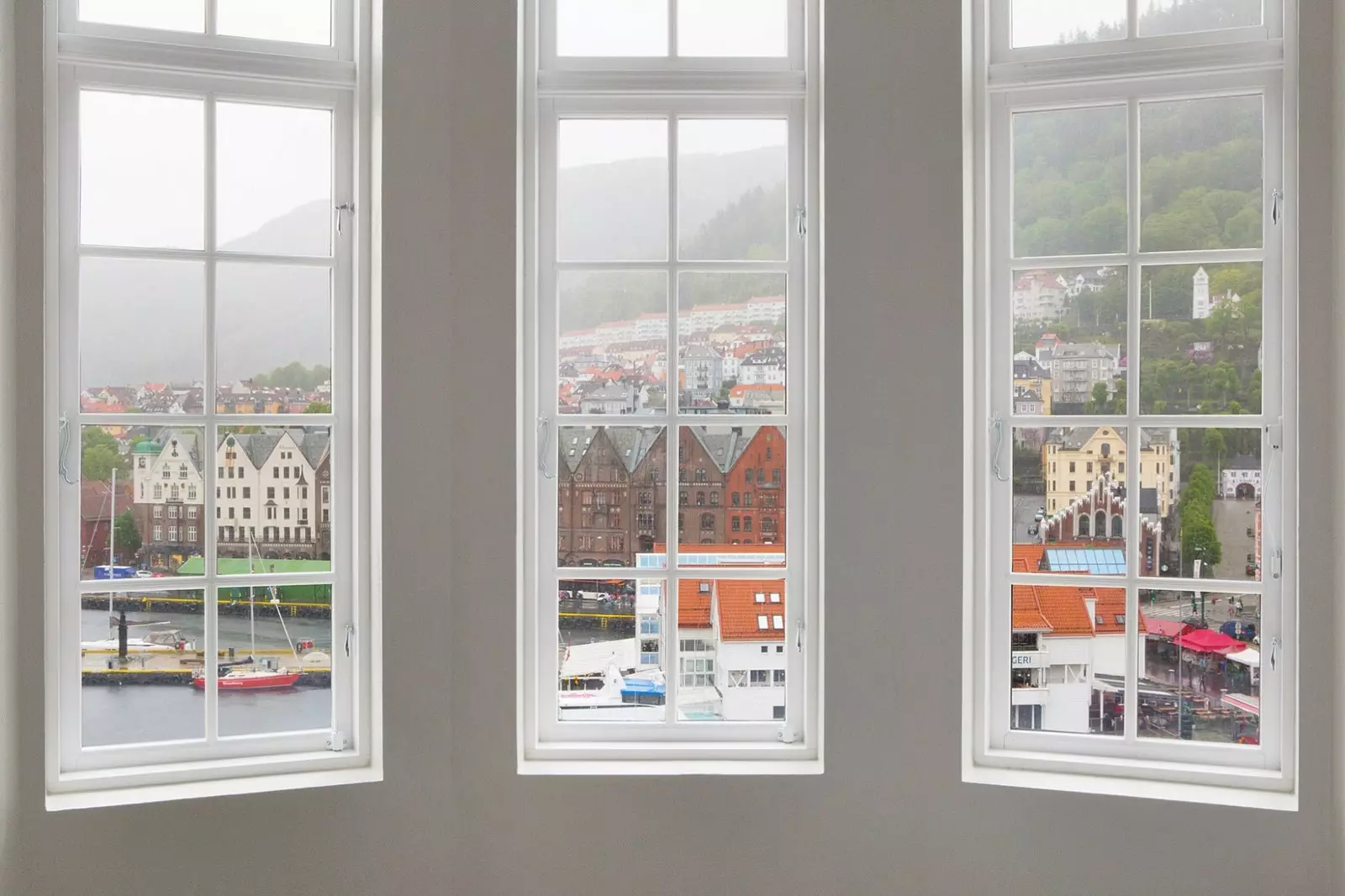
Views from the Scandic Torget Bergen.
